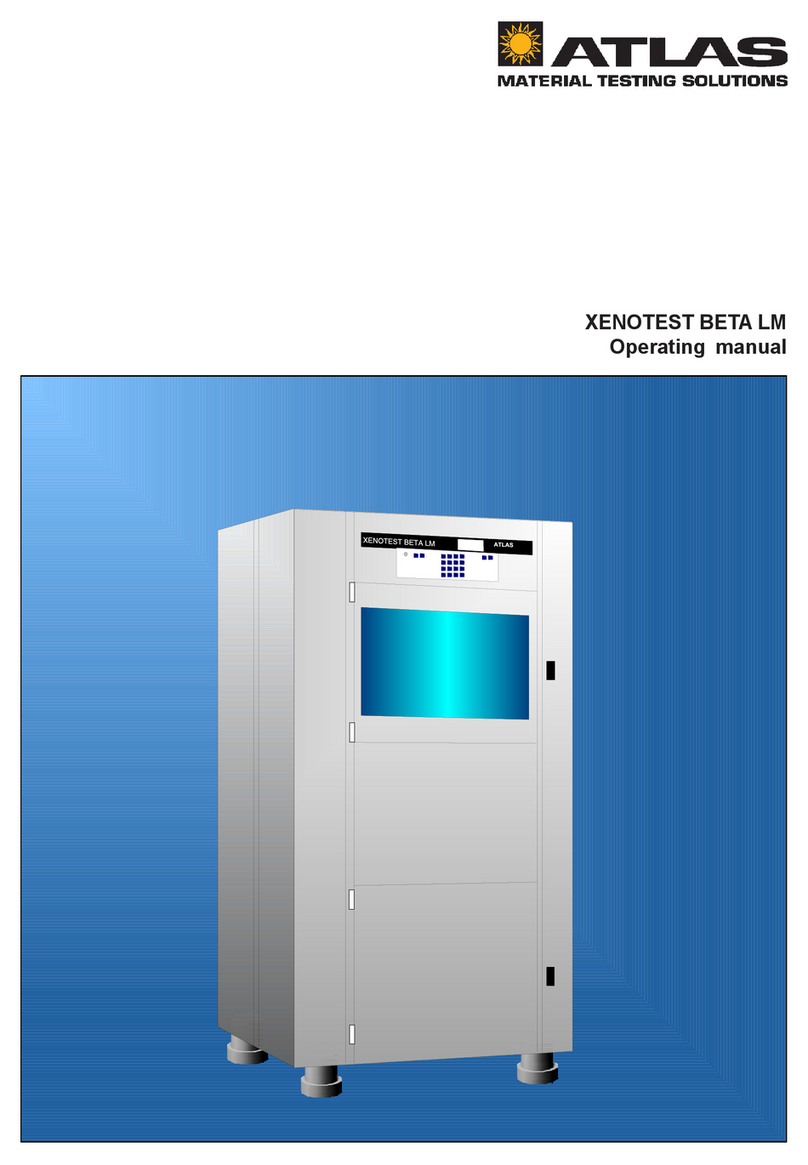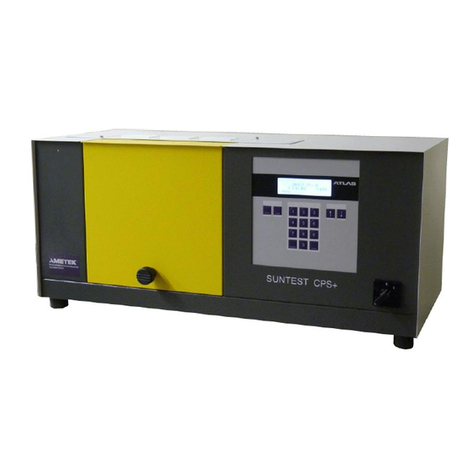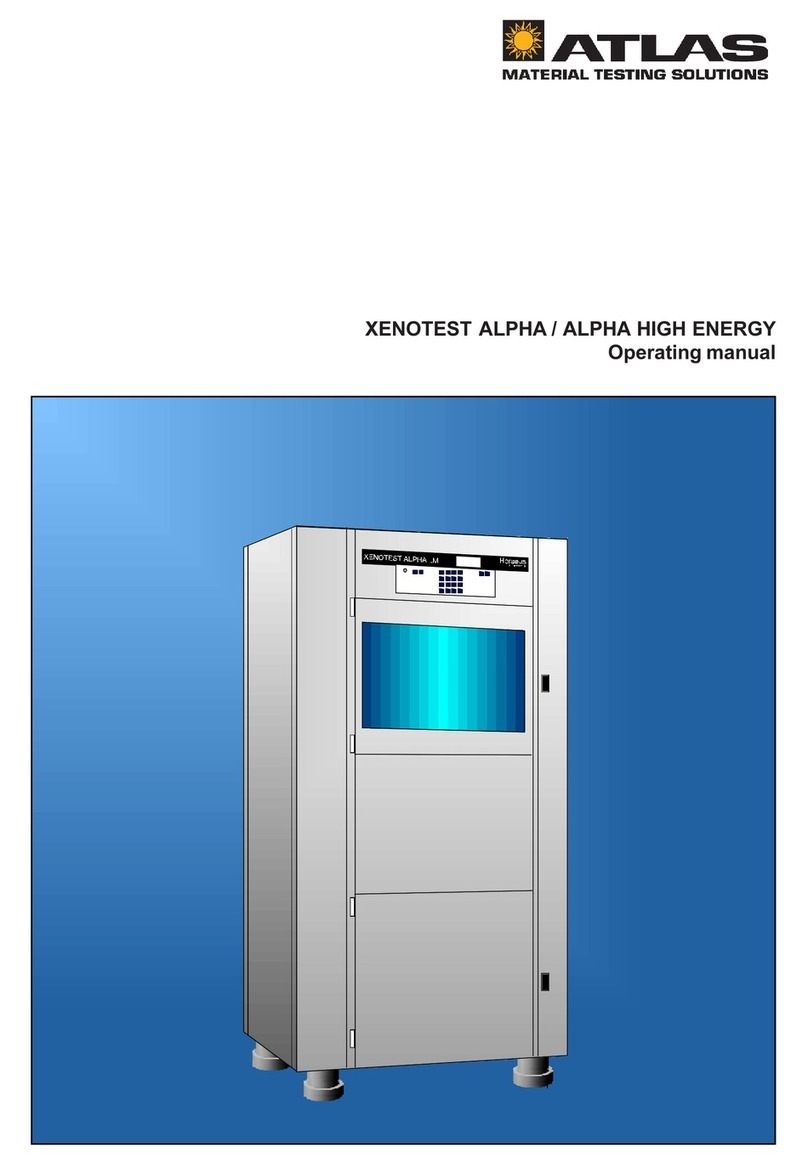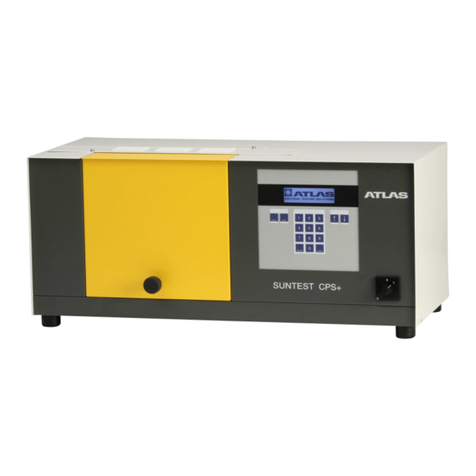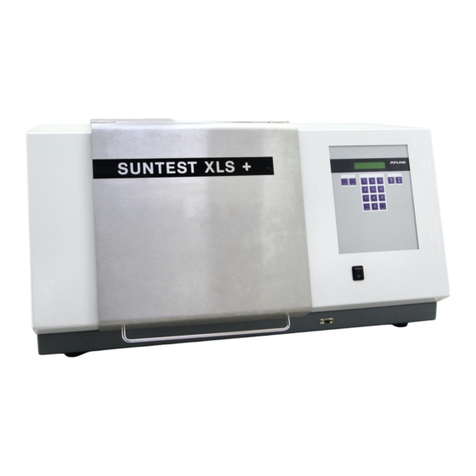
4
Operating Instructions Xenotest®150 S+
Contents
1 Safety instructions.................................................................................. 6
1.1 Explanation of symbols ........................................................................ 8
1.2 Use of the instrument........................................................................... 9
1.3 Safety features of the instrument ........................................................ 9
2 Delivery of the instrument ................................................................... 11
2.1 Packaging ...........................................................................................11
2.2 Standard equipment ............................................................................11
3 Location requirements ......................................................................... 12
3.1 Room climate ..................................................................................... 12
3.2 Room ventilation ................................................................................ 12
3.3 Instrument exhaust air system .......................................................... 12
3.4 Water supply system ......................................................................... 13
3.5 Transport ............................................................................................ 14
3.6 Space requirements ........................................................................... 14
4 Description of the instrument ............................................................. 16
4.1 Front and right view ........................................................................... 16
4.2 Rear, left and top view ....................................................................... 17
4.3 View of the test chamber ................................................................... 18
4.4 View of the operating panel ............................................................... 19
5 Functional description ......................................................................... 20
5.1 Program control ................................................................................. 20
5.2 Absorption filter system ..................................................................... 21
5.3 Overview of the filter systems ........................................................... 23
5.4 Irradiation system .............................................................................. 24
5.5 Ventilation system .............................................................................. 25
5.6 Misting and humidification functions.................................................. 26
5.7 Measuring and control sensor system .............................................. 27
6 Start-up ................................................................................................... 28
6.1 Initial start-up ..................................................................................... 28
6.2 Checking the instrument components ............................................... 28
6.3 Installation and removing the xenon lamp ........................................ 29
6.3.1 Removing the xenon lamp ................................................................. 30
6.3.2 Xenon lamp installation...................................................................... 31
6.4 Filter replacement .............................................................................. 32
6.5 Loading sample holders .................................................................... 34
6.6 Installing / removing optionale sensors ............................................. 36
6.7 Filling the water reservoir .................................................................. 38
6.8 Connecting the exhaust air system ................................................... 39
6.9 RS 232 interface set-up ..................................................................... 40
6.10 Power supply connection ................................................................... 40
6.11 Set-up for optional printer .................................................................. 42












